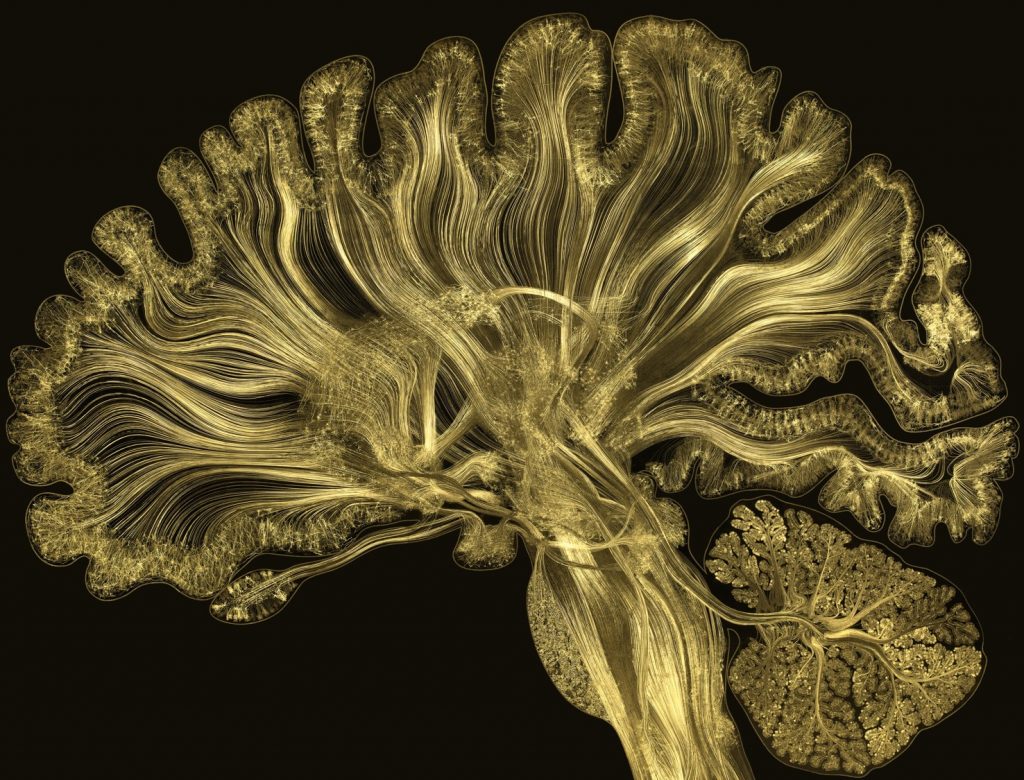Cérebro (the brain)
Wider Than the Sky

The Fundação Calouste Gulbenkian will be present from March 19 onward an exhibition that celebrates the extraordinary complexity of the human brain, in its multiple representations, from science to arts and philosophy. The title, Cérebro (the brain): Wider than the Sky, is inspired by a poem by Emily Dickinson, The brain is wider than the sky, in which the American poet describes the human brain as “deeper than the sea” and having “just the weight of God”. With scientific curatorship by Rui Oliveira, the exhibition is developed in three thematic nuclei, each with its fundamental concept, and shows information on the current state of neuroscience knowledge, in a broadly interactive way, and with multiple windows open to the human mind. With the collaboration of artists such as the musician Rodrigo Leão and the artist Leonel Moura, and with the use of surprising interactive facilities, the initiative promises broad opportunities to dazzle its visitors.
Module I – In the beginning there were no brains
This nucleus addresses the origin of the brains as a process of biological evolution, presenting the complexity of the human brain as part of this evolutionary continuum. 3D models of brains of different vertebrates (fish, amphibians, reptiles, birds and mammals) are included and it explains how the brain receives sensory information and executes motor programs. The visitor will encounter a monumental sculpture of a neuron with 12 meters length suspended from the ceiling and illuminated with leds that simulate neuronal firings in reaction to the presence of visitors. To illustrate the role of the sensory and motor cortex, a motor homunculus and a sensory homunculus, both interactive, will be available.
Module II – Think of the Brain
The centerpiece of this nucleus is an Orchestra of Brains, which consists of a multimedia facility in which four visitors can simultaneously view and listen to their brain activity. The signals, captured by a helmet, are projected on a large screen and its translation into sounds was developed by Rodrigo Leão. It explains how the complexity of the brain generates the mental experience we have of the world and of ourselves – from memory to language, perception and emotions, and some milestones of the history of the brain paradigm are presented as the biological basis of the mind in a chronological way. A painting by Bridget Riley, from the Modern Collection of the Gulbenkian Museum, illustrates how the perceived principles behind the optical illusions were used by the OpArt art style. An interactive piece about animals that have the capacity for vocal learning – one of the pillars of oral language in humans – supports the section on language included in this nucleus.
Module III – Artificial Minds
This nucleus approaches how the development of technology in the area of artificial intelligence and robotics made it possible to replicate the complexity of the organization of the brain and its way of processing information in artificial systems. It is also shown how brain activity is being used to control external appliances, and how this technology is being applied in the biomedical context in patients with motor disabilities. Visitors will be able to play Mindball, a mental football game in which two visitors are faced by moving a ball towards the opponent’s goal based on their brainwaves. Several interactive pieces, such as a tablet application on ethical dilemmas raised by the use of self-guided cars, will also be on display.
5 €
Location: